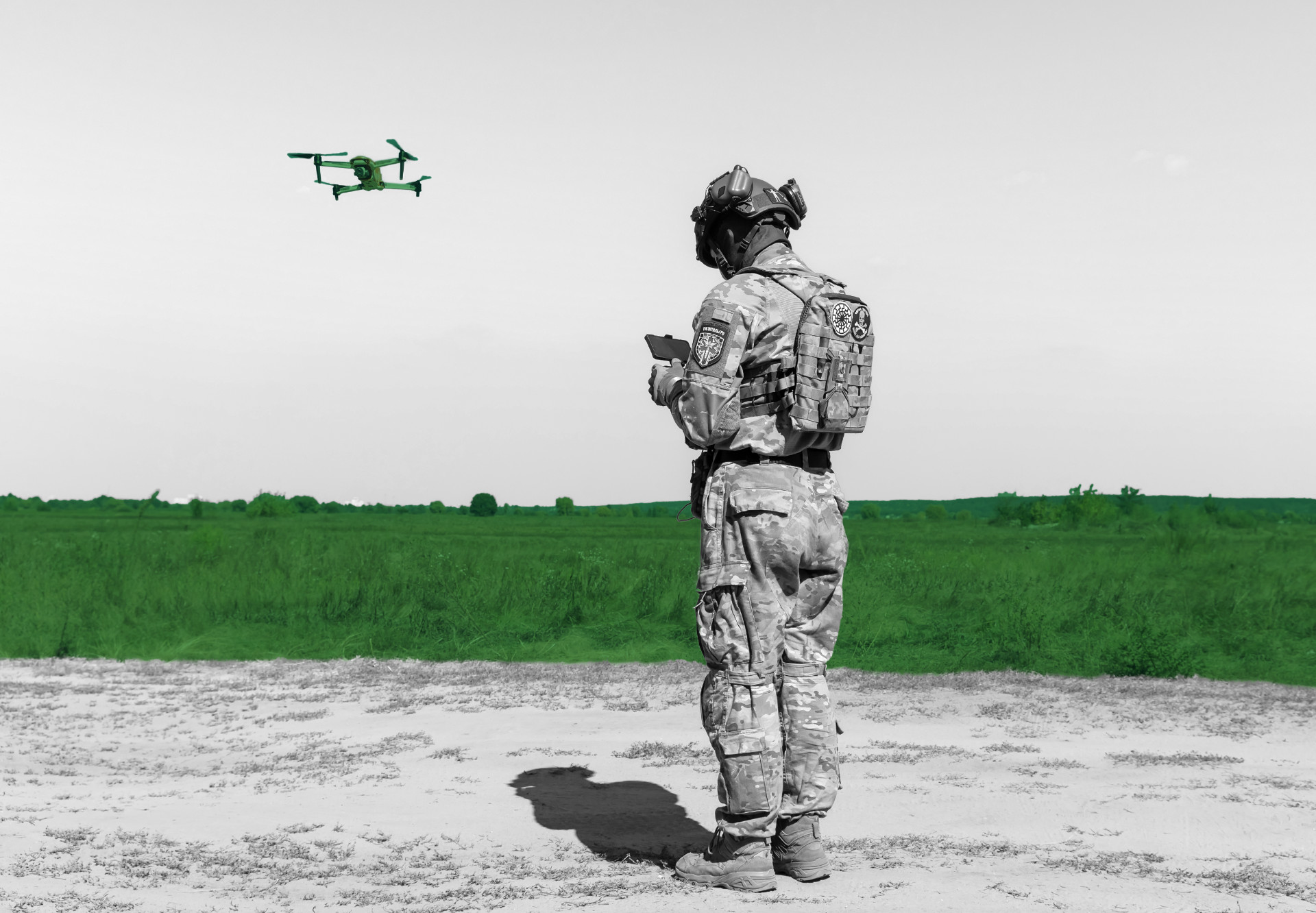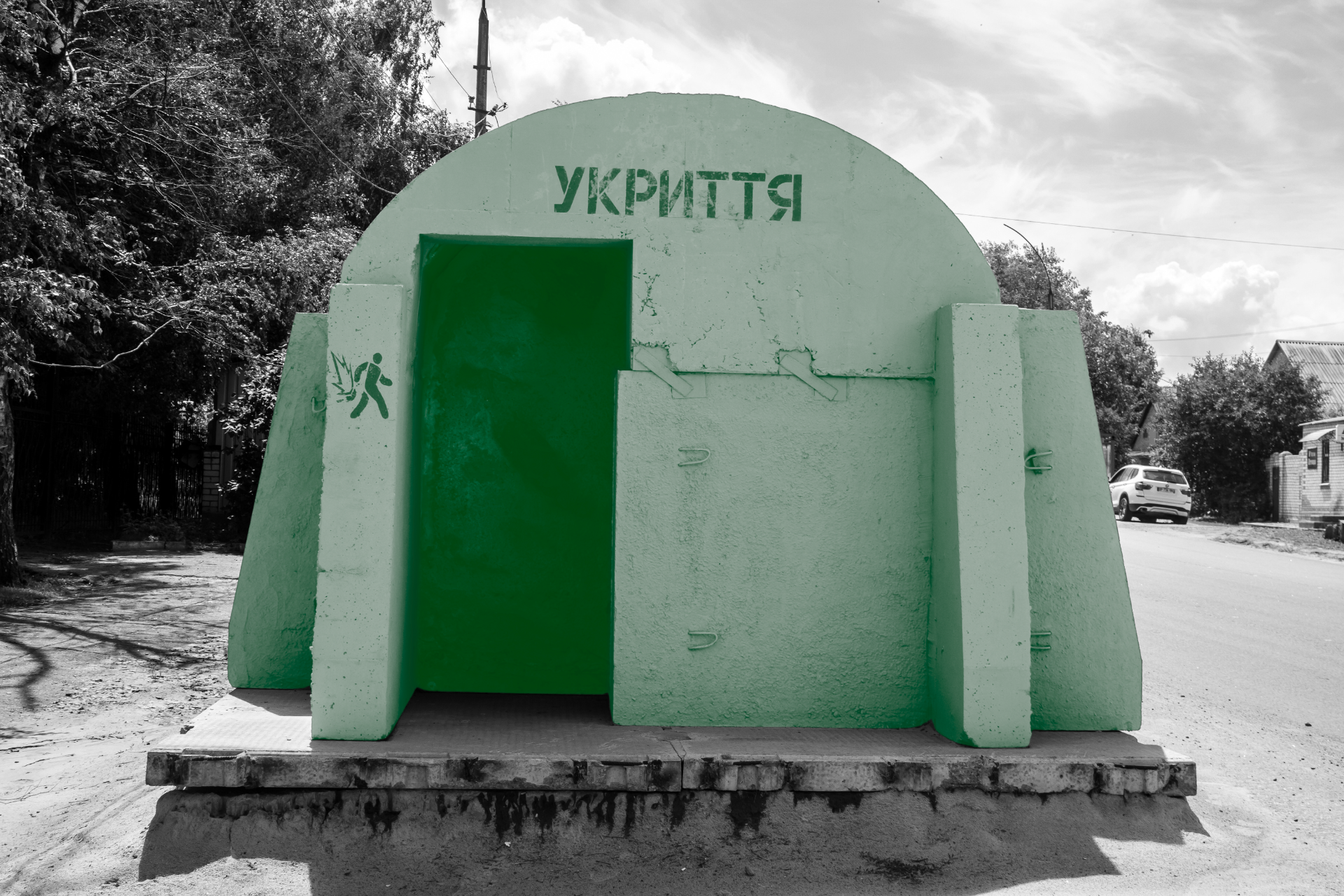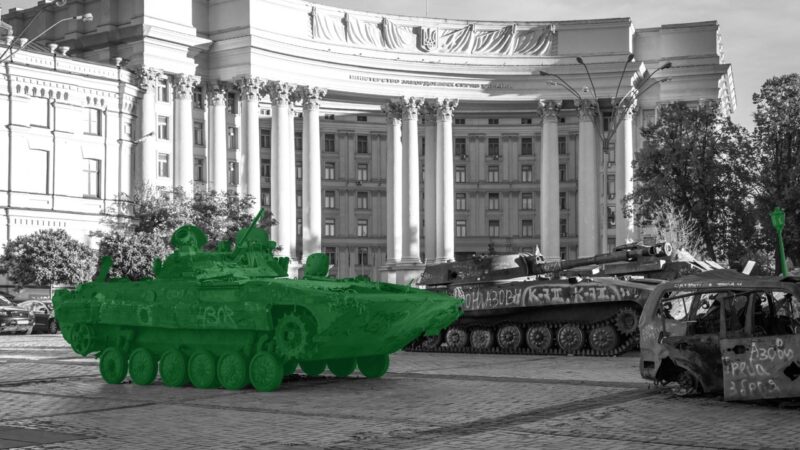Of dinosaurs and dragonflies: Agility in the age of war

The eternal struggle: Dinosaurs vs. Insects
Throughout history, victory in war has rarely belonged to the largest or most powerful. Instead, success favours those who adapt—to terrain, to technology, to evolving circumstances. This creates a classical dynamic: the struggle between dinosaurs and insects. The dinosaurs, powerful and imposing but inflexible, often fall before the smaller, nimbler insects, whose survival lies in their adaptability.
Today’s conflict in Ukraine offers a vivid example of this pattern, as agile innovation challenges brute force. Yet this is not a new phenomenon. It echoes through many of history’s most consequential wars.
Gigantomania: Nazi Germany’s love affair with size
Nazi Germany embodied the dinosaur approach during World War II. Driven by an obsession with size and power, Hitler’s engineers built ever-larger weapons, believing that superior firepower and heavier armour would guarantee victory. Their greatest pride was in their heavy tanks: the Tiger I, the Tiger II (King Tiger), and ultimately the Maus, a super-heavy tank that remains the heaviest fully enclosed armoured fighting vehicle ever built.
On paper, these machines were formidable. The Tiger I outgunned most adversaries, while the King Tiger added even more armour and firepower. The Maus, nearly twice the weight of its predecessors, was designed to be virtually invulnerable. In practice, though, these giants were plagued with problems. Their massive weight made them ill-suited for most roads and bridges, and their fuel demands far exceeded Germany’s supply capacities. Mechanically unreliable, they often broke down or became immobilized in the boloto ‘marshes’ and forests of the Eastern Front. The harsh Russian winters froze engines, snapped tracks, and turned these technological marvels into stranded monuments to German overconfidence.
The German fascination with giantism extended beyond tanks. Advanced submarines, dual-purpose highway systems (the famous Autobahn), early cruise and ballistic missiles, and sophisticated propaganda machinery all showcased impressive technological ambition. Yet they shared the same fatal flaw: an inability to function effectively in the vast, unforgiving geography of Russia, where logistical and environmental challenges overwhelmed assumedly superior complexity and size.
Allied innovation: Adaptation from the West
In contrast, the Allied powers—particularly the United States, Great Britain, and France—embraced a different form of adaptability that proved to be decisive in this conflict. Above all, it was American mass production capabilities that revolutionized warfare.
The United States’ innovative assembly lines rapidly produced vast quantities of tanks, aircraft, ships, and supplies—most notably the Sherman tank, which, while technically inferior to German heavy armour, was reliable, easy to repair, and available in overwhelming numbers. US shipyards also produced Liberty Ships at unprecedented speeds, keeping vital supply lines open across the Atlantic.
For their part, the British made critical breakthroughs in radar technology, which allowed early detection of incoming German aircraft during the Battle of Britain. This innovation provided the Royal Air Force with a decisive edge, enabling outnumbered British pilots to intercept Luftwaffe raids efficiently and protect their homeland from invasion. In the realm of intelligence, British codebreakers at Bletchley Park, led by Alan Turing, cracked the German Enigma cipher, giving the Allies critical insight into German operations and allowing them to preempt and counter many of the Nazi war machine’s moves.
French innovation, though partially suppressed after 1940 under the Vichy regime, contributed significantly to armoured warfare doctrine in the pre-war period and resurfaced later in joint operations. The French Resistance also exemplified decentralized, adaptive warfare, employing sabotage, intelligence-gathering, and guerrilla tactics to disrupt German logistics and communications behind enemy lines—foreshadowing many of the principles seen in modern decentralized warfare.
Soviet innovation: A triumph of pragmatism
While Germany sought perfection, the Soviets embraced practicality. They did not attempt to outbuild the German giants but instead developed simpler, more resilient systems that could be produced quickly, maintained easily, and operated under brutal conditions.
One of the Soviets’ most effective innovations was the widespread use of electric arc welding in tank production. This made tanks stronger and faster to produce while requiring less skilled labour. The result was the legendary T-34.
Designed by the Morozov Machine-Building Design Bureau in Kharkiv, the T-34’s sloped armour deflected enemy fire, while its wide tracks allowed it to navigate deep snow and muddy terrain where German tanks floundered. Its reliable diesel engine performed better than Germany’s more complicated gasoline engines. Above all, the T-34 was designed for mass production. As Germany struggled to maintain a limited number of Tigers, Soviet factories produced tens of thousands of T-34s, flooding the battlefield with armour.
This emphasis on simplicity extended to Soviet small arms. The AK-47 assault rifle, designed by Mikhail Kalashnikov, was durable, easy to maintain, and functioned reliably in virtually any environment. While Western firearms often offered superior precision, the AK-47’s ruggedness made it ideal for harsh conditions and irregular warfare.
The Soviets succeeded not by matching Germany’s quality but by overwhelming it with quantity and durability. The formidable German tanks may have won individual battles, but they were ultimately outnumbered and outlasted.
Geography and logistics: The endless Russian battlefield
Beyond technology, war has always been a contest against geography and logistics. Russia’s vast distances, primitive infrastructure, and harsh climate have repeatedly defeated ambitious invaders.
Napoleon’s army in 1812 collapsed not from battle alone but from exhausted supply lines that failed to sustain his troops as winter set in. Over a century later, Hitler made the same mistake. Operation Barbarossa underestimated the logistical nightmare of advancing deep into Russia. German vehicles broke down on muddy roads, horses froze, and dwindling fuel supplies halted operations. Again, the final, crushing blow was delivered by the Russian winter.
The famous Russian saying “In Russia there are two troubles—fools and roads” helps to explain this recurring challenge. Even the most advanced armies cannot triumph if they cannot move, supply, and sustain their forces across Russia’s unforgiving landscape.
Ukraine’s operation “Spider Web”: Insects strike again
Decades later, the same dynamic has re-emerged in Ukraine. Instead of relying on massive, armoured columns or large air fleets, Ukraine has adopted a nimble, decentralized strategy that mirrors the adaptability of insects.
Operation “Spider Web” illustrates this approach. Ukrainian drones, precision-guided munitions, and special operations units have struck Russian military bases, airfields, fuel depots, and command centers deep behind enemy lines. These attacks have disrupted Russian logistics, damaged vital infrastructure, undermined morale, and forced Russian forces to divert resources to defend areas once considered safe.
A key element of Ukraine’s strategy has been its creative use of commercial drones, modified for military purposes. Cheap, readily available quadcopters drop explosives directly onto enemy positions, while first-person-view drones allow operators to steer devices into Russian trenches, vehicles, and supply depots with remarkable precision.
This technological ingenuity is amplified by access to Western intelligence, real-time satellite data, and communication networks like Starlink, providing Ukrainian units with superior situational awareness and tactical flexibility.
The new insect arsenal of the 21st century
In today’s battles, the insects take many forms. Small, inexpensive drones now swarm over battlefields where traditional airpower is too risky or costly. Cyber warfare enables even small states or non-state actors to cripple power grids, hack communications, and steal critical data. Decentralized special operations strike deep behind enemy lines, guided by real-time intelligence and empowered by flexible command structures.
The once-clear distinction between front lines and rear areas has vanished. Every fuel depot, every command post, every supply hub is vulnerable. No capital city is safe from precision drone or missile strikes. The battlefield stretches across entire countries.
Modern wars are no longer won by the sheer size of armies, but by the agility of systems, the adaptability of soldiers, and the resilience of technology in the face of constant disruption. Mobility consistently proves more effective than size. The massive German tanks of World War II failed where Soviet T-34s, Allied radar, codebreaking, mass production, and today’s Ukrainian drones have succeeded. Logistics, though often overlooked, remains the decisive factor determining the endurance of any military campaign. Both Napoleon and Hitler saw their campaigns collapse not from military defeat but from broken supply chains.
Culture profoundly shapes innovation. German engineers pursued perfection, while Soviet engineers focused on functionality. American engineers mastered industrial scalability, British scientists developed game-changing detection and intelligence capabilities, and French partisans perfected grassroots resistance—all contributing to the Allied victory. Today, Ukraine’s culture of grassroots improvisation allows it to adapt more rapidly than the larger but more rigid Russian military machine. Modern battlefields no longer have safe zones; long-range strikes, drone incursions, and cyber sabotage can reach any point, erasing the front-rear distinction entirely. Leadership that is decentralized and flexible has repeatedly proven more effective than tightly controlled hierarchies. Above all, the ability to adapt remains the most decisive factor in warfare.
The warfare of tomorrow: Toward the next evolution
The future of warfare promises even more profound changes. Artificial intelligence, autonomous weapons, hypersonic missiles, and space-based surveillance are already transforming how conflicts are fought. Yet the fundamental dynamic between dinosaurs and insects persists. Even the most sophisticated and expensive systems remain vulnerable to smaller, decentralized threats that can penetrate defenses, exploit weaknesses, and inflict disproportionate damage.
The enduring truth remains: Victory belongs not to the strongest but to the most adaptable. Whether in the snowy plains of Russia, the deserts of the Middle East, or the digital battlefields of cyberspace, survival will continue to favour those who evolve faster than their enemies.
Photo description:
ID2199807985
KYIV REG., UKRAINE – Sep. 08, 2022: A drone operator from the field medicine division Hospitallers launch a quadrocopter to search for the wounded on the battlefield. Field tests of THeMIS crawler drone





